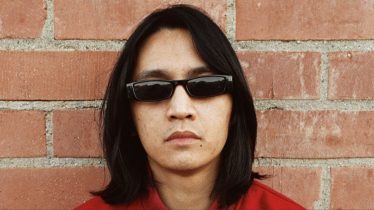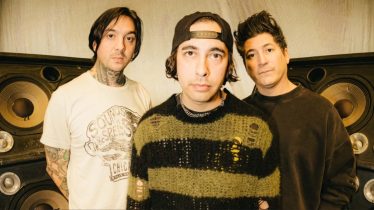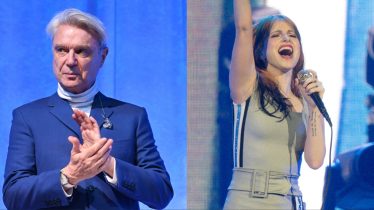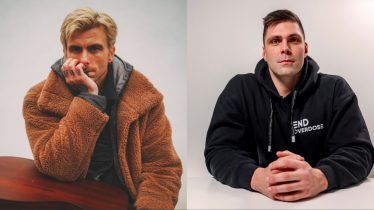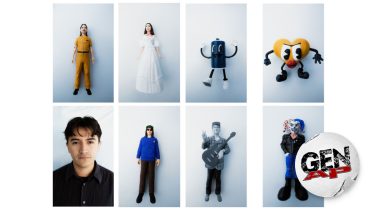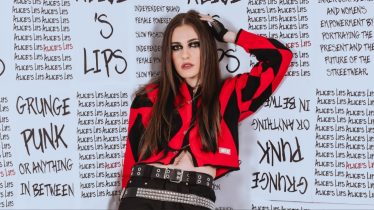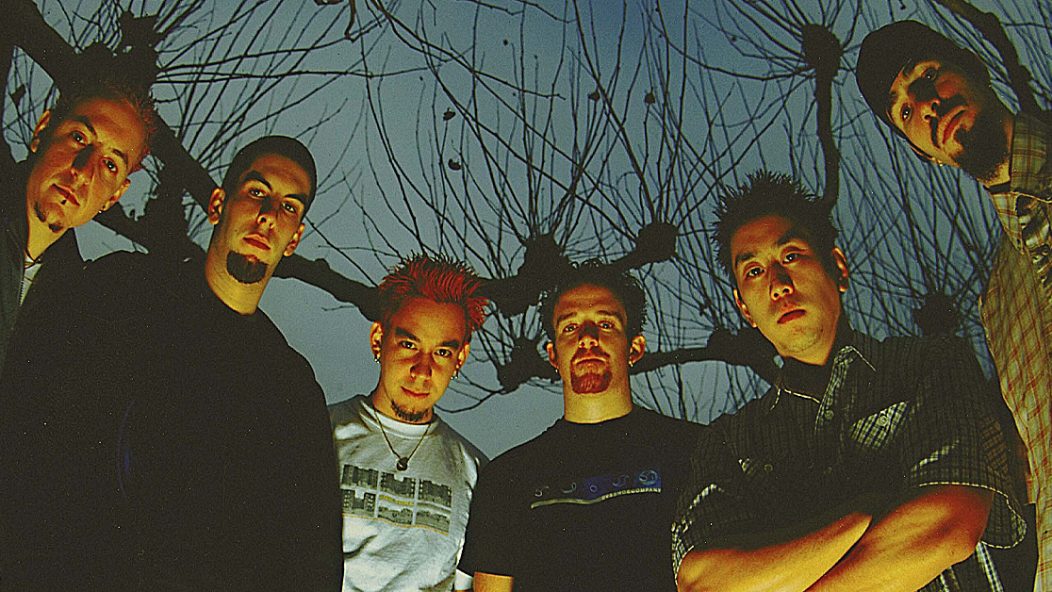
How Linkin Park's "In The End" became a worldwide smash hit
It’s no secret: Linkin Park‘s anthemic single “In The End” has remained a hallmark of the band’s work in the last two decades. As the eighth track on their 2000 debut album Hybrid Theory, “In The End” was initially released as its fourth and final single — quick to receive commercial success and become one of Linkin Park’s most definitive songs.
In his new book, Anthems We Love: 29 Iconic Artists on the Hit Songs That Shaped Our Lives, longtime music journalist Steve Baltin sits down with a plethora of musicians to examine the stories behind some of the most recognizable songs in music history.
Read more: A beginner’s guide to Linkin Park: from radio hits to rarities
“These songs have saved people’s lives. They have been played at weddings, funerals, parties. So, it was fascinating to talk with some of the greatest artists ever — U2, My Chemical Romance, The Temptations, Carly Simon, Aerosmith and more — about how these songs have changed and the stories they have heard from fans,” Baltin tells AP.
Among those 29 artists include Linkin Park founding member and lead guitarist Brad Delson, who opened up about the legacy of “In The End.”
“Many people said the song saved their lives, and Chester Bennington told me many times over the years how often he heard that from fans. I have seen on several occasions, whether at live shows or from talking to fans, how much the song means to the LP audience,” he adds.
As the band’s highest-charting single ever, Delson credits its roaring popularity to MTV, touring and the power of its music video. Read an excerpt from the chapter below.
MORE THAN TWO DECADES AFTER ITS RELEASE, Linkin Park’s debut, Hybrid Theory, remains the best-selling rock album of the twenty-first century. The band’s guitarist and co-songwriter Brad Delson believes that is a testament to the album’s strength from top to finish. “I think every song on that album is really strong,” Delson says.
The album spawned four singles — “One Step Closer,” “Crawling,” “Papercut” and the final one, “In The End.” “I think ‘In The End’ stands out even among them,” Delson says.
The song’s success upon release bears that out. While the first two singles both hit the top five on multiple Billboard rock charts, including the Alternative Airplay, Mainstream Rock and Rock And Metal, “In The End” is the track that catapulted the band into the mainstream, hitting number two on the Hot 100 and ending the year at number seven on the year-end Hot 100.
Delson traces the song’s emergence into becoming an anthem early on. “In terms of becoming an anthem, ‘One Step Closer’ came out, kind of put us on the map, like MTV, album came out, sales never really dropped after the first week, which is very rare,” he says. “We were already touring, already building a fan base, fought with our record company about what the second single would be, we thought it should be ‘Papercut,’ and they were a lot smarter and knew that ‘Crawling’ was the way to go. MTV was really important for us at that time. And if something was on MTV, it was like kids knew it. If the video was on MTV, kids knew it like nationally or internationally. ‘Crawling’ really bumped us up a whole level touring, touring, touring all the time, that all time.”
According to Delson, the early success of the first three tracks set everything up so when “In The End” was released as a single October 9, 2001 fans had become familiar with Linkin Park and were primed for the song to become a smash.
“When ‘In The End’ hit, it was like in top rotation on MTV, the video. There’s a close-up of Chester [Bennington] that’s really iconic. And so the songs being on MTV and growing, ‘In The End’ was the apex of pop culture attention around the album and it was like a climactic spotlight on the band,” he says. “And so the power of the video being in popular culture rotation on MTV and us being on tour, basically metal tours, was a really powerful phenomenon.”
The song was able to cross over into worlds, taking the band from rock and metal charts into MTV success. “I’d say the song took on a life of its own. It was on TRL, which was basically really pop stuff,” Delson recalls. “And so at that point, it’s like you’re pressing on the gas to get on the freeway and you’re starting to accelerate and that song just hit its stride. At a certain point, there was no thought of, ‘Oh, we should promote this.’ It was just like, ‘Let’s take our foot off the gas and it’s now in orbit. There’s nothing we need to do.’ The song hit launch and it’s in orbit and now it’s just in orbit.”
Though the song would eventually become a worldwide smash, Delson does not recall exactly when in the band’s early days of touring, “In The End” became the sort of sing-along smash that an entire sold-out audience screamed at the top of their collective lungs. But once the song did become a smash he noticed the crowd responded to the track in a unique way.
“At some point, and I don’t know when, the bridge of the song became the moment of the song, especially live. And that’s an unusual thing in a song because the chorus is always the most memorable part, and the bridge cords are the same as the chorus,” he says. “However, you get this new lift emotionally, lyrically, melodically. And that’s the part, that audience, that crowds at shows really embrace. When you say anthem, I think of an anthem being embraced by other people as this is their story. And ‘In The End,’ I believe, became an anthem because of the way people relate to the whole song, and in particular, the way they sing out the bridge.”
Once the song achieved anthem status it became a centerpiece of the band’s live shows around the globe, a song that fans would sing along with in the States, Europe, Asia, everywhere. And with that, there were several emotional, memorable performances. But as a fan there was likely no more emotional performance than October 27, 2017, a few months after the band’s singer, Chester Bennington, was found dead July 20 of that year.
On October 27, the five remaining members of the band came together with a wide array of special guests — from Alanis Morissette and Gavin Rossdale and to members of Korn and System Of A Down — to pay tribute to Bennington at the Hollywood Bowl. But no guest was brought out to sing the emotional “In The End,” leaving that to the capacity crowd, who poured their hearts, emotions and tears into screaming every word of the song.
Though the emotion was at peak level that night, Delson had seen that kind of outpouring from fans at the live shows for years.
“People connect very strongly with the music, really have embraced it as their own, have a true emotional connection with the music, with the songs, and you’ve seen it. There’s an outpouring of connection and emotion about these songs that it couldn’t be more personal for people, how they relate to these songs,” he says. “You can see it on an individual level when someone’s telling a story about how they connected with the song. And then you see it on a collective level in concert, when this kind of community of individuals becomes one super loud, multi-dimensional voice.
And the volume at which people sing, and particularly the bridge, I mean, the whole song, they’ll rap all the verses. And without exception, we get to the bridge, that became a moment where not only would Chester not have to sing at all, the crowd basically became louder than the PA at that moment. And so we just stopped playing, we would stop playing the whole song at that moment, we would stop the guitars and drums, and the crowd would just sing the whole song, and then we would have the hilarious task of trying to get back in sync with the song, with ourselves. However, at that moment in the song, we didn’t need to do anything. We just had to stand there and receive it.”
